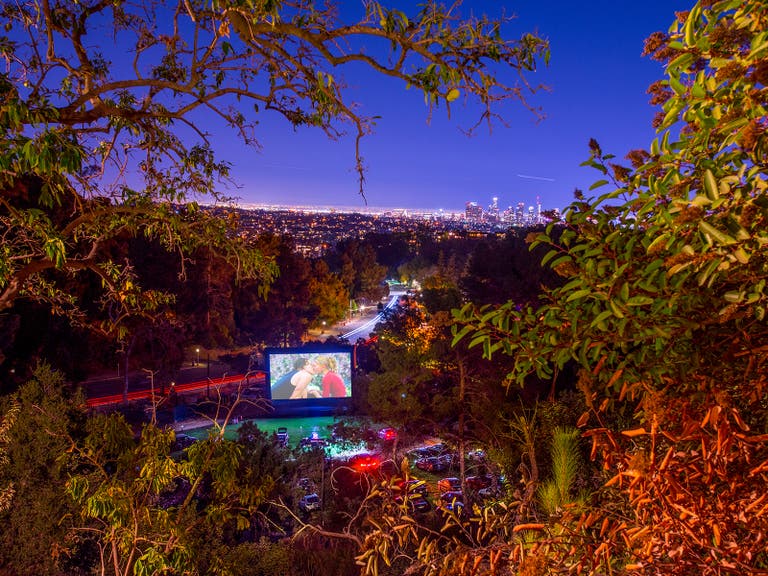The Dude Abides in Los Angeles
Discover "The Big Lebowski" locations in L.A.

The Coen Brothers’ The Big Lebowski opened on March 6, 1998, their first film after the commercially and critically acclaimed Fargo, and followed two years later by the even more celebrated O Brother, Where Art Thou. Around the turn of the millennium, you wouldn’t have been blamed for assuming that the strange, atypical “Lebowski” would be a quirky footnote in their filmography, a palate-cleanser between classics. You’d have thought the film would only be loved by a few weirdo cinephiles, like their earlier Hudsucker Proxy or the later Burn After Reading. (Full disclosure: I am one of those weirdo cinephiles.)
But then the 21st century came, and with it new generations of moviegoers who were looking for a cult classic to call their own. And so, from trivia nights, college campuses, stoner couches, Blockbuster aisles and Halloween costumes, the humble Big Lebowski arose as an undisputed—perhaps *the* undisputed—lead contender for the elusive title of Cult Classic of the 2000s.
The Big Lebowski is also, through and through, a Los Angeles classic. Along with David Lynch’s Mulholland Drive (2001), a film with which “Lebowski” shares part of its mystical-Western DNA (plus one important location, see below), the Coen’s first crack at a Homeric Odyssey (isn’t The Dude, like the O Brother convicts, just on a twisted quest to get back home?) is about our unique city. “They call Los Angeles the City of Angels,” the initial voiceover declares. “I didn't find it to be that exactly, but I'll allow as there are some nice folks there.” After 117 minutes with The Dude, Walter and Donny, moviegoers all over the world agreed.
A Lebowski Tour of Los Angeles includes public and private locations (please be mindful around the latter), and also places that have vanished even in the last 25 years. Keep in mind, Los Angeles sometimes celebrates its past and architecture, and sometimes physical and demographic change alters everything - it is what makes it a living city and not a European-style museum town.
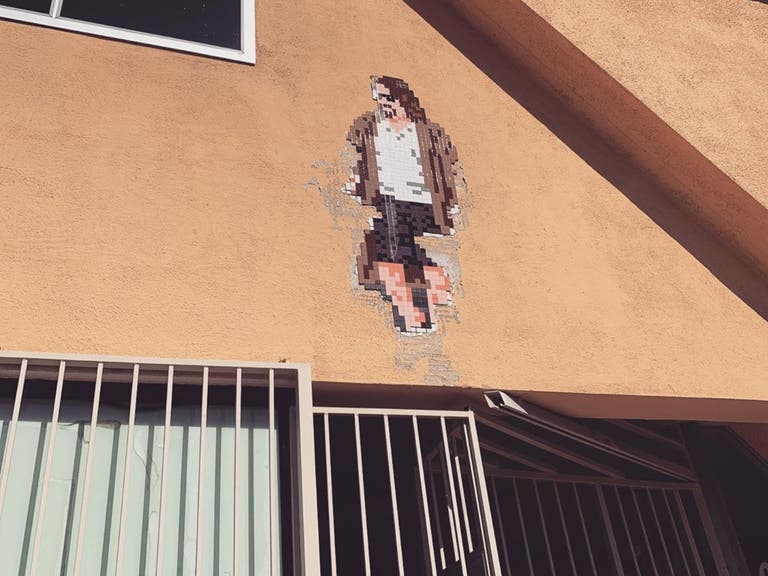
The first site Lebowskiphiles inevitably seek out is the mid-century bowling alley that serves as the movie’s cathedral of friendship and setting of some of the most memorable (and quotable) banter in screenwriting history. The spiritual home of John Turturro’s scene-stealing Jesus (and his unforgettable theme song, the Euroexotica cover of the Eagles’ "Hotel California" by the Gypsy Kings), alas, is no more. You can drive by the site of the Hollywood Star Lanes bowling alley (5227 Santa Monica Blvd.), and see the elementary school that replaced it in the early 2000s. If you want to experience a similar ambiance, Shatto 39 Lanes is still open.
The Big Lebowski runs through the DNA of Lucky Strike Hollywood and throughout the chain - the "Hollywood" sign is the original from Hollywood Star Lanes, and it's been recreated for numerous locations. The bar has been repurposed from Lane #7 of Hollywood Star Lanes.
The opening shot is a composite of a desert landscape shot in Pearblossom, near Palmdale (up North on the 138) and a nightscape of the city from Simi Valley. Find a high point on the hills near the Ronald Reagan Presidential Library and point your camera south as you blast “Tumbling Tumbleweeds.”
We first encounter The Dude at the supermarket (a little hat-tip to The Long Goodbye, Robert Altman’s fellow Raymond Chandler-influenced LA. cult classic). It’s a Ralphs that's supposedly in Venice, but Lebowski archeologists tracked down one of the extras, who revealed that the actual location was at 1745 N. Garfield Rd., in South Pasadena (near San Marino). Since corporate supermarket chains alter their interiors all the time, and a Ralphs is pretty much any Ralphs, pilgrimage to this location is for maniacal completists only.
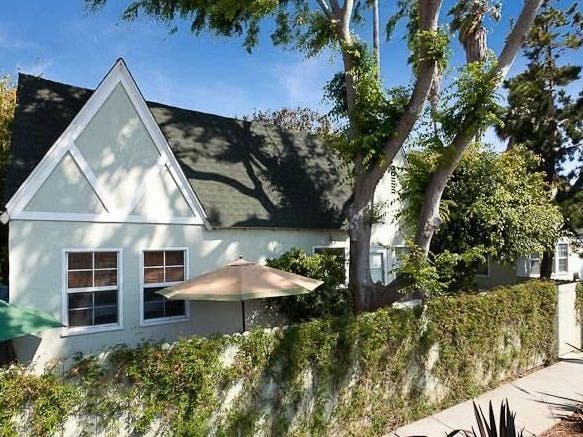
The Dude’s home is actually in Venice. A one-bedroom apartment in a six-unit complex, there’s some debate whether the actual bungalow is 606 or 609 Venezia Ave. Please don’t bother the neighbors. And don’t pee on their rug. It really ties the room together.
The (Big) Lebowski mansion is actually a composite of two locations. The exterior is a luxurious private property at 10231 Charing Cross Rd. Secluded in mega-expensive Holmby Hills, the outside view of the Lebowski estate can be spotted next to a much more famous local landmark, Hugh Hefner’s Playboy Mansion.
The Lebowski mansion interior is one of LA's most iconic buildings and film locations: the Greystone Mansion, aka the Doheny Mansion (905 Loma Vista Dr., Beverly Hills). Now owned by the city of Beverly Hills and with a park open to the public (the mansion itself is only open for special events), the interior of this architectural landmark was originally built by oil heir Ned Doheny between 1927 and 1930. Doheny was shot and killed in the house in a confusing incident, in the middle of a scandal with political and sexual overtones. The Greystone mansion housed the American Film Institute filmmaking program in the 1970s and David Lynch lived and shot Eraserhead on the premises. The bowling alley downstairs was restored for There Will Be Blood. Countless movies and TV shows besides Lebowski have featured the lavish interiors to signify obscene amounts of California wealth.

Walter: “What'd he say? Where's the hand-off?” Dude: “There is no f***ing hand-off, Walter! At a wooden bridge we throw the money out of the car!” The “Wooden Bridge” in the middle of nowhere (196 Torrey Rd., Fillmore) is actually not wooden - the wood was added by the set decorators. But you can still visit the desolate location and you can go there with your driver. Just no funny stuff.

Diners loom large in Southern California films, and perhaps none looms larger than Johnie’s Coffee Shop (6101 Wilshire Blvd.), which is located across from the Academy Museum of Motion Pictures and hasn’t been a functional restaurant for years. This is the location for the “family restaurant” where Walter is asked to keep it down, in spite of his buddies dying face down in the muck so that people could enjoy it without prior restraint. It is mostly used for filming (including Quentin Tarantino’s Reservoir Dogs), and in recent years it somewhat incongruously served as a colorful "Bernie Sanders for President" campaign office.
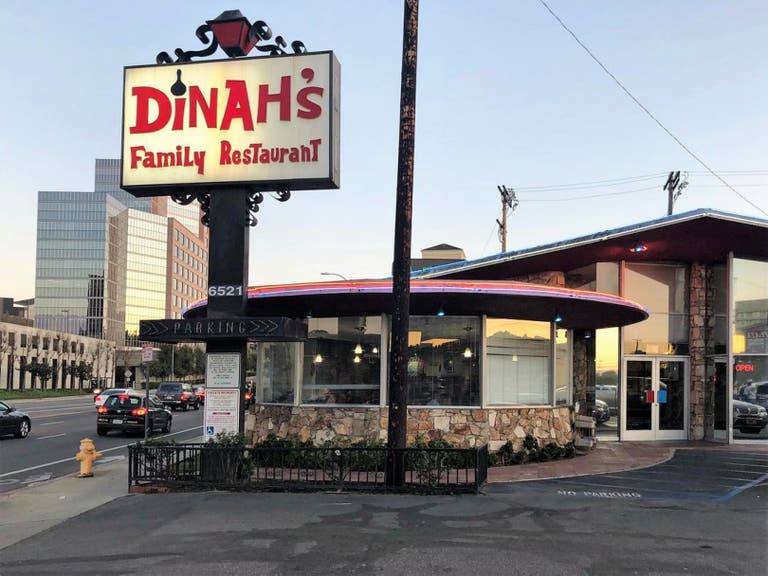
The pancake house where the Nihilists discuss business is the beloved Dinah’s Family Restaurant (6521 S. Sepulveda Blvd.), serving its famous fried chicken and all-day diner fare since 1959. Fun fact: the toeless Nihilist moll is played by LA-based, GRAMMY Award winning singer-songwriter Aimee Mann.
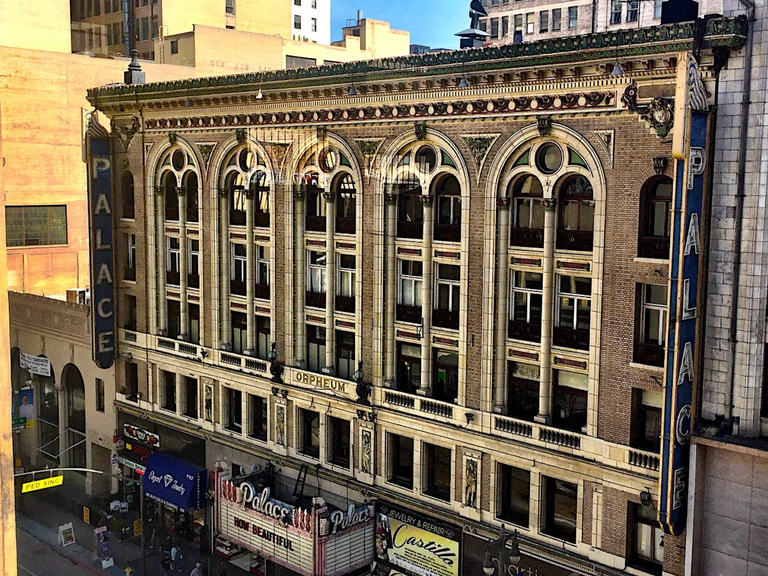
Maude Lebowski’s artist loft is one of the historic residences located above the Palace Theatre at 630 Broadway in Downtown L.A. The interior of the Palace doubles as Crane Jackson’s Fountain Street Theater, where the Dude’s landlord performs his wacky dance recital. In David Lynch's Mulholland Drive, the back of the Palace Theatre stands in as the entrance to Club Silencio.
Walter has every right to be very upset when he shows up at little Larry Seller’s house, but you definitely should not bother the residents of 1824 Stearns Dr., in the quiet area near where Crescent Heights Boulevard, La Cienega Boulevard, Venice Boulevard and the 10 Freeway meet. And if you happen to see a 1985 Chevrolet Corvette C4 parked on the street, please don’t destroy it.
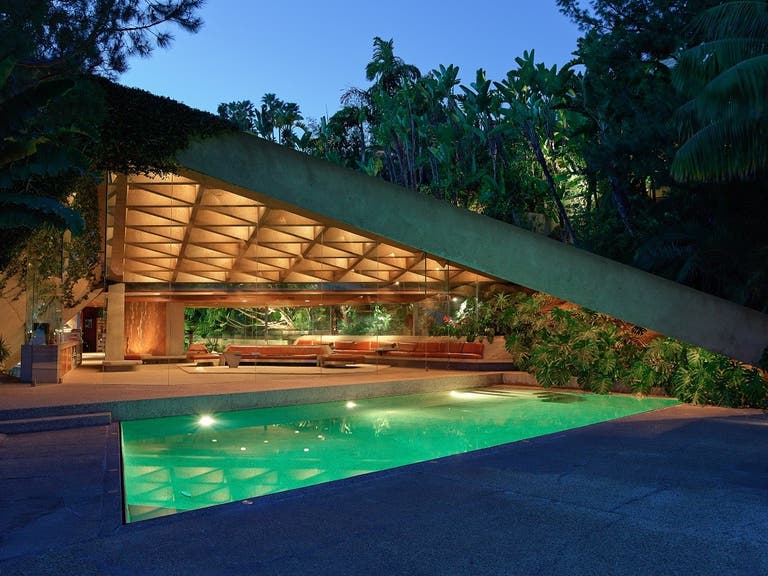
The interior of pornographer Jackie Treehorn’s home is yet another world-famous Los Angeles property: the modernist masterpiece Sheats-Goldstein House, designed by famed architect John Lautner. The house has been owned for years by eccentric millionaire, basketball superfan, and serial model dater James Goldstein, who has promised to donate it to LACMA as its first architectural work of art.
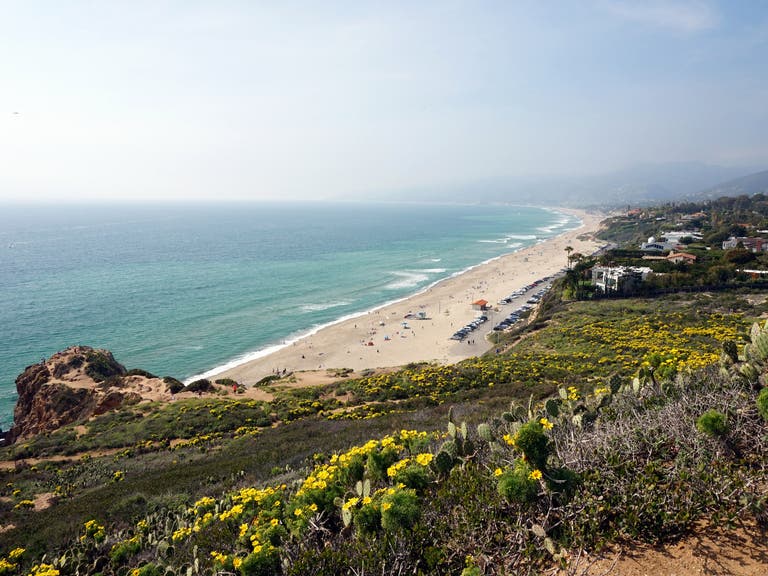
There’s a long history of movie villains living in Los Angeles modernist landmarks, as illustrated by the brilliant film essay Los Angeles Plays Itself (which every Lebowski, film, and architecture fan should see). The Sheats-Goldstein House is nowhere near Malibu, but Jackie Treehorn’s beach party was actually shot there, at Point Dume State Beach on Westward Beach Road, not far from Bob Dylan’s long-time Los Angeles compound. (The Coens are hardcore Dylan-files, as Inside Llewyn Davis and their use of deep-cut gem “The Man in Me” in Lebowski attest.)
Finally, Donny’s ash-scattering ceremony takes place at the "Sunken City," located near the landmark Point Fermin Lighthouse in San Pedro. Goodnight, sweet prince.
